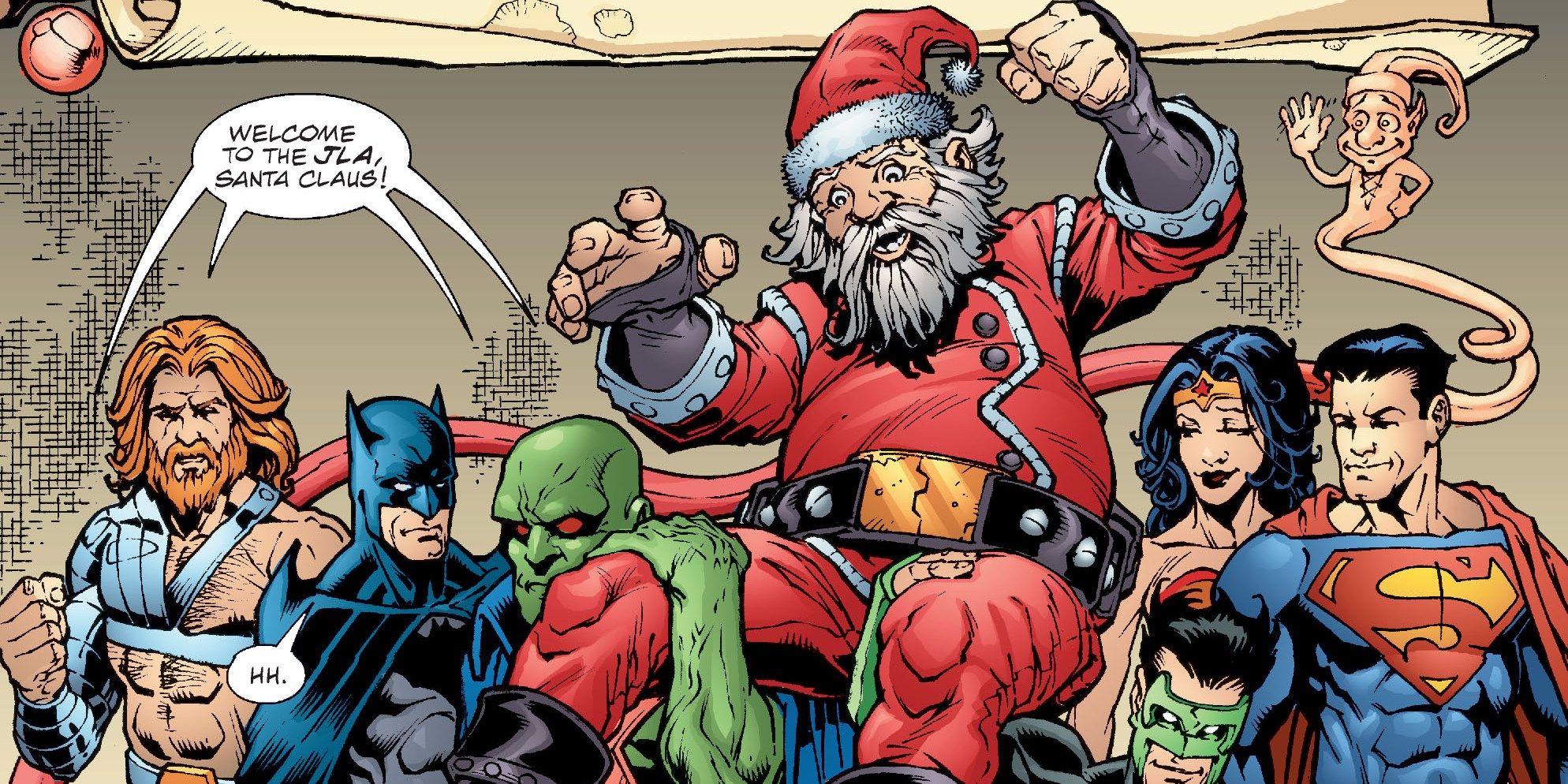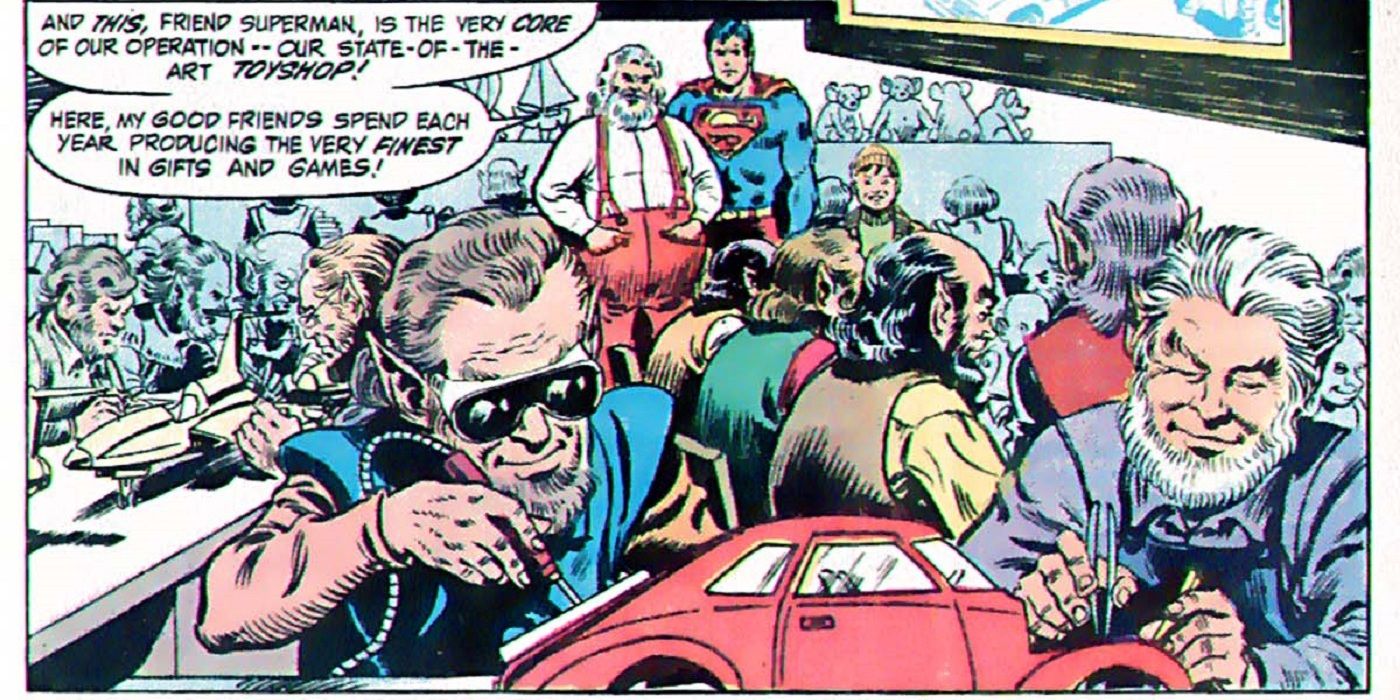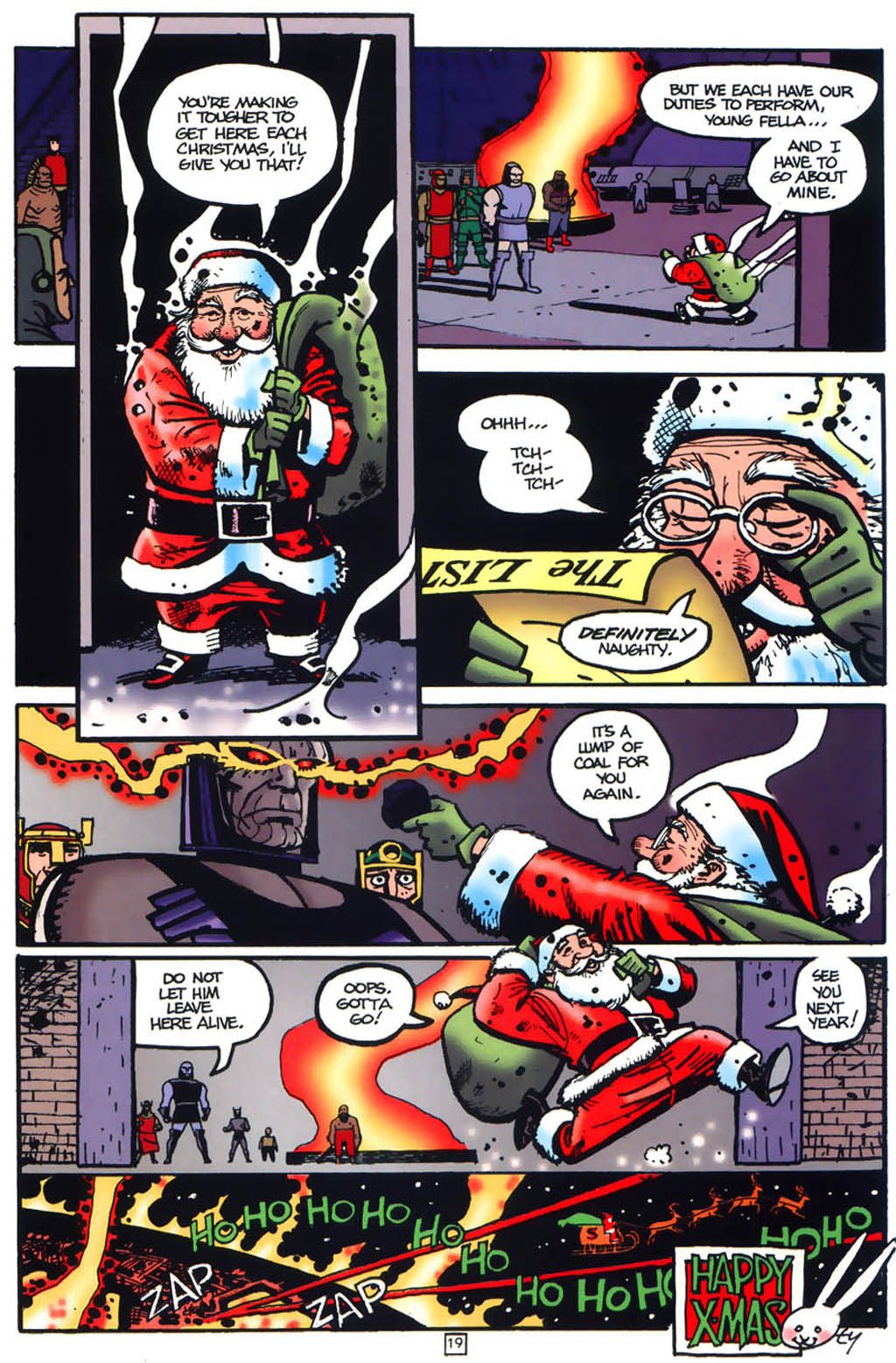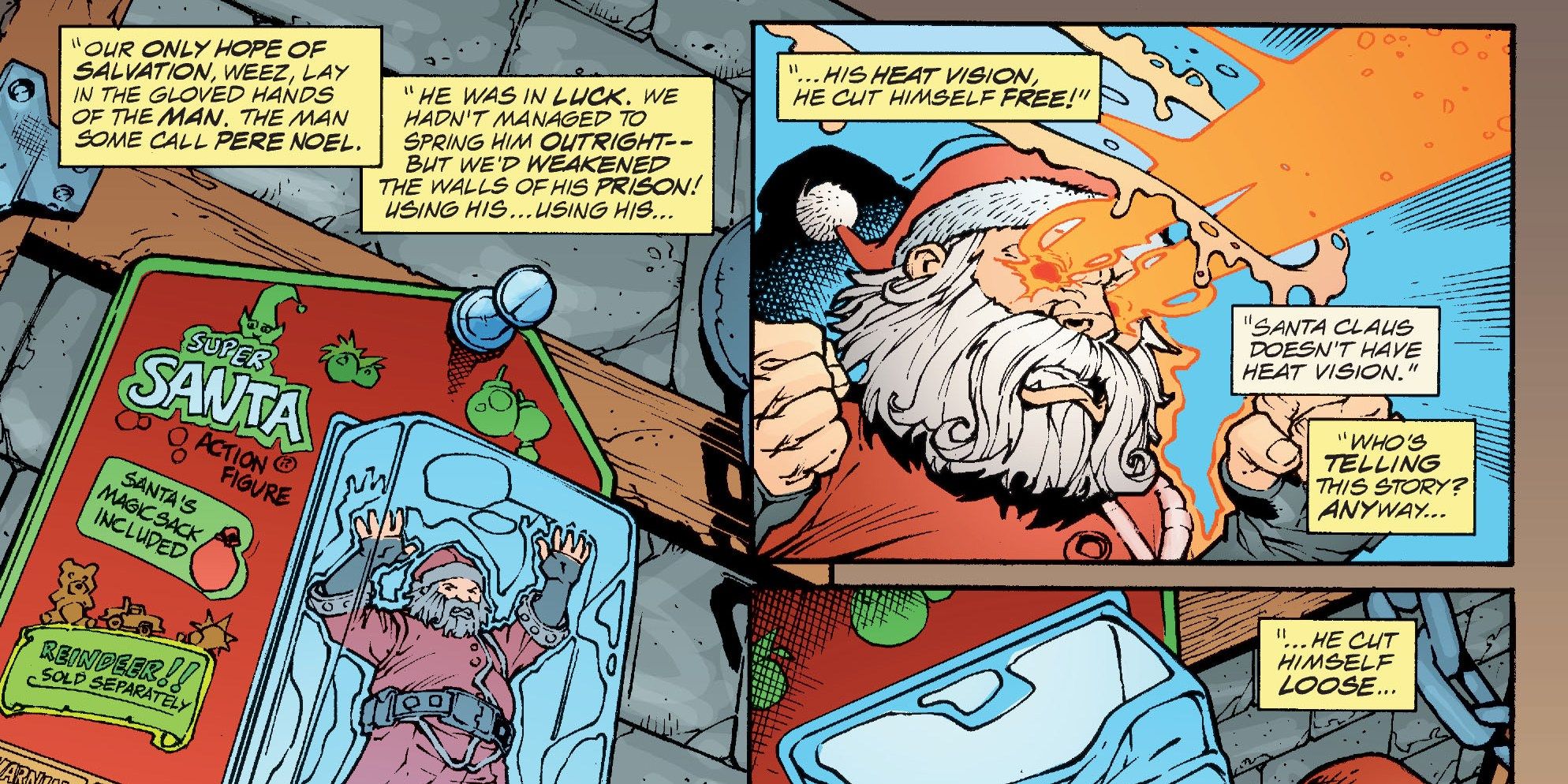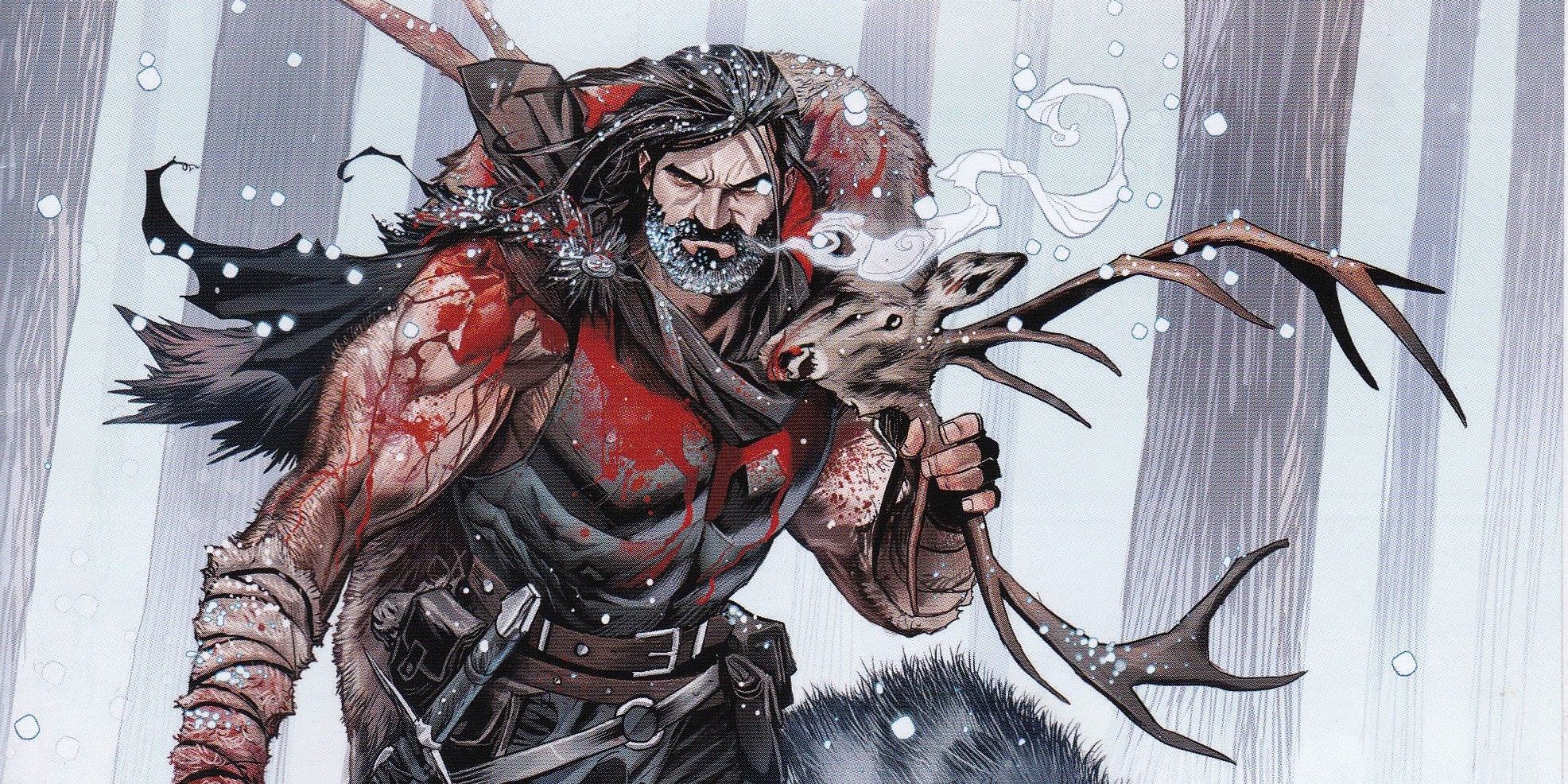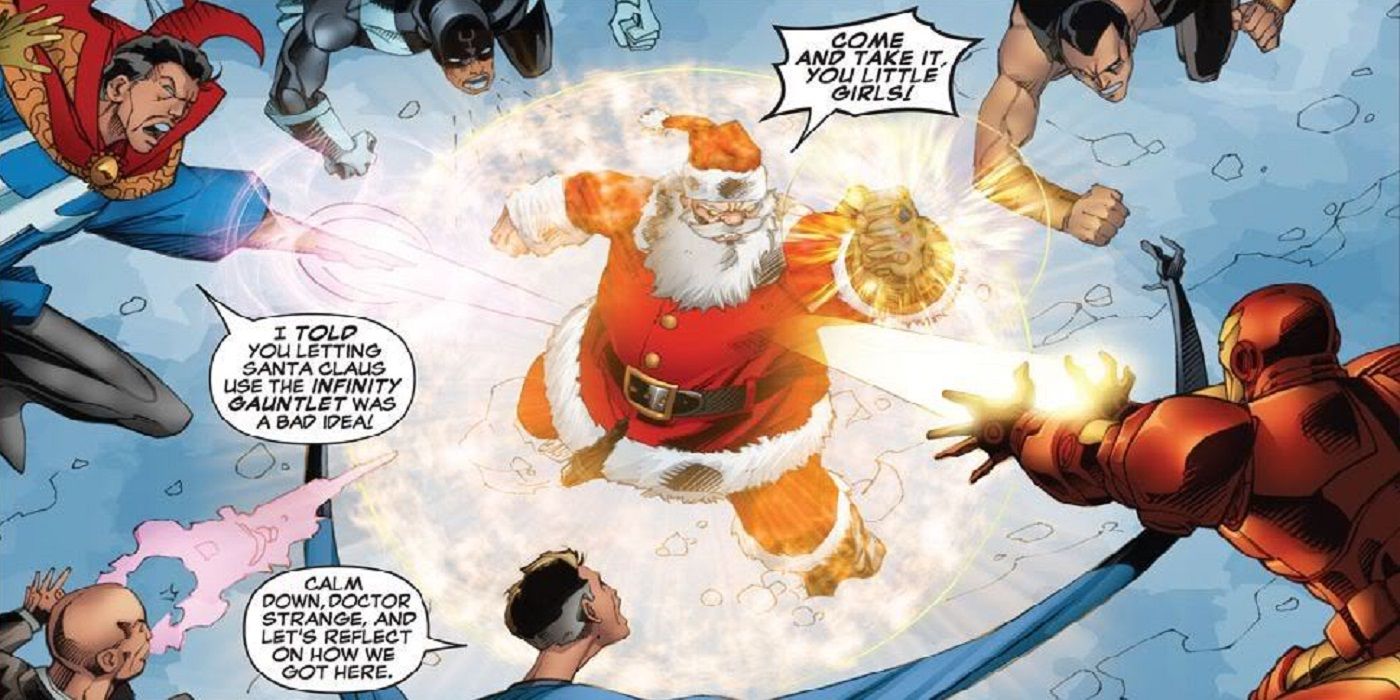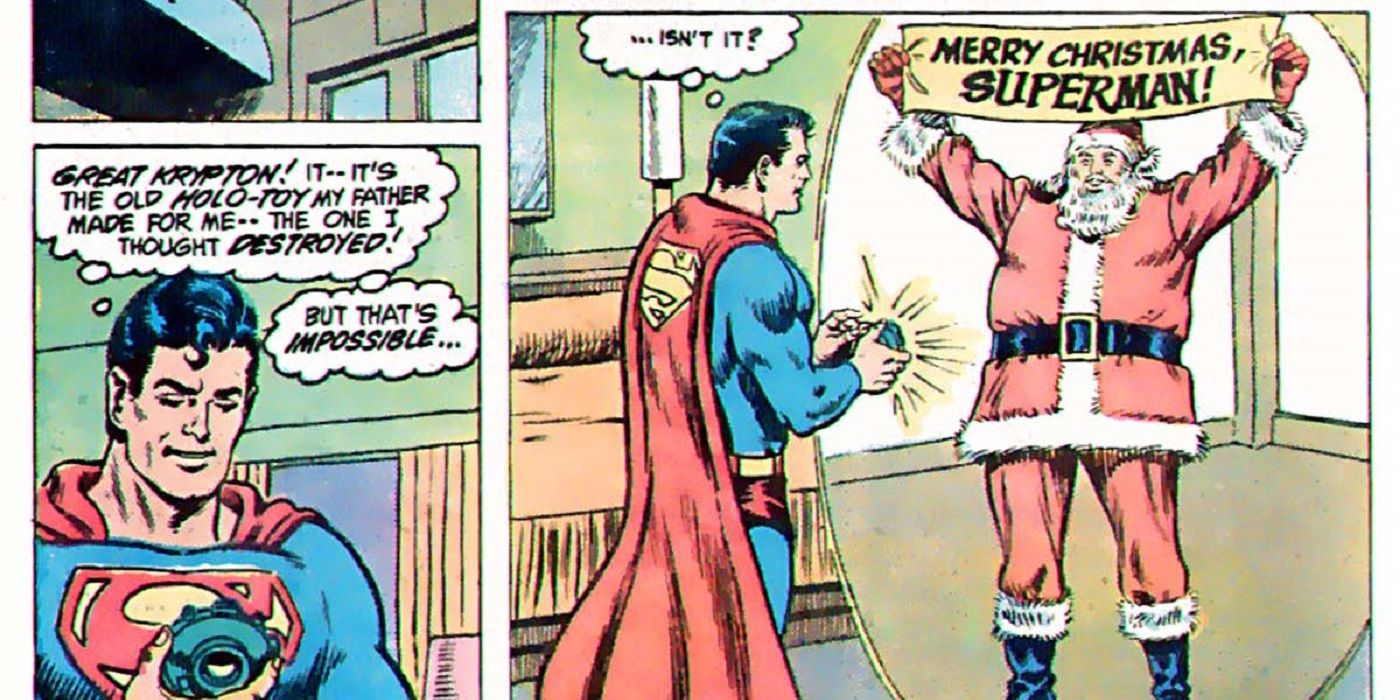Dear Comic Book Resources:
I am 7 years old. Some of my friends say that Santa Claus isn't a superhero, but I say "if you see it on CBR.com it is so." Please tell me the truth -- is Santa Claus a superhero?
/signed/ Valeria Richards, Manhattan
Dear Valeria:
The short answer is yes; of course Santa Claus is a superhero! He exists just outside the realm of everyday experience, he possesses incredible powers and/or resources, and he uses them to bring gifts and other glad tidings. For close to eighty years now we have experienced all manner of super-folk, from those who fly and move mountains to those who represent the peak of human potential; and Santa fits neatly within their number. If you want something to tell your classmates, tell them simply that.
Naturally, if your friends need more convincing, kindly invite them to read on.
THE TRAPPINGS
Santa Claus has a lot in common with your average super-person, starting with his sartorial choices. Although his look has changed over the centuries, he has worn easily-identifiable outfits, the latest of which has become iconic in its relative simplicity. Santa's fur-lined red coat, cap and pants, and his shiny black boots, are as recognizable as Superman's red-and-blue costume or Captain America's patriotic uniform.
Not strictly a part of Santa's clothes, but indispensable nonetheless, is his bottomless bag of toys. Like Batman's utility belt or Green Arrow's quiver, it always includes just the right item for a particular situation. It might not be that four-wheeler or SleepNumber bed you've been asking for (because Santa sometimes gives parents veto power); but trust Santa to know when you really need new pajamas.
Speaking of the right tool for the job, Santa's high-powered ride is equally essential to his Christmas Eve errands. Pulled by eight or nine flying reindeer, it's capable of visiting a decent chunk of the Earth's children in one night -- plus occasional side trips for when some kids have to go elsewhere a few days before or afterwards. We won't go too far into reindeer backstories (to say nothing of their mysterious "reindeer games"), except to note that two of them were called "Dunder and Blixem" -- perhaps on Earth-Two? -- and we're pretty sure Rudolph was at one point hated and feared by those he was sworn to protect. In any event, the sleigh and reindeer are easily recognizable despite their configuration. We wouldn't be surprised if Santa has several different models of sleigh, Batmobile-style, in his vast garage.
Of course, that garage is located at Santa's North Pole complex. Although the jolly old elf's origins have come from all corners of Western Europe, he's settled in Canadian territory. In fact, 1983's "DC Comics Presents" issue #67 (cover-dated March 1984) placed Santa's headquarters not too far from Earth-One's Fortress of Solitude. Superman just never noticed it because Santa didn't want him to. The whole thing houses Santa and Mrs. Claus and all the elves and reindeer, plus warehouses, workshops and whatever else the operations might require. We can't say how big the whole thing is, but it would probably put the Baxter Building or the Legion of Super-Heroes' Clubhouse to shame.
THE MISSION
By the way, we're a little fuzzy on whether Santa actually makes commercially-available items -- with well-rested, generously-compensated labor, as if you had to ask -- or whether he merely distributes them. If the latter, we suppose he works a little Christmas magic on some companies' inventory rolls, not unlike Bruce Wayne and Alfred Pennyworth sneaking various Bat-items into Wayne Enterprises' budgets.
The point is to get the toys to their destinations using every bit of Santa's nigh-unlimited resources. As the head of this highly-skilled team, Santa directs the elves and reindeer like Doc Savage or the Shadow coordinated their own sets of operatives. They may not get the glory or the instant recognition, but they're vital to each year's success.
Omniscient surveillance, even benign omniscient surveillance, probably seems rather intrusive in this drone- and hacking-rich world. However, knowing who's been bad or good is key to Santa's planning. Besides, if you've ever lived in Metropolis, there's a good chance Superman has seen you when you're sleeping (although probably on accident) through his X-ray or telescopic vision. At least with Santa you know he's always watching, and the consequences probably won't involve heat vision.
While the bulk of each Christmas mission is the happy task of delivering toys and other goodies, Santa's sleigh is also loaded with a decent amount of coal for those names on the naughty list. Santa personifies kindness and generosity, and probably cuts a lot of kids more slack than maybe they thought they were going to get. Still, at some point even Santa has to draw the line. He's like the mirror version of the Spectre, whose primary task is doling out divine wrath, with much smaller doses of divine redemption (mostly in the Hal Jordan years). There may be more incentive to "be good for goodness' sake" where the Spectre is concerned, because Santa's not in the gruesome-ironic-punishment business; but we won't get into that today.
THE POWERS
Obviously Santa is a magical being, but owing to the lack of empirical evidence it's hard to tell if his powers are innate or are centered around magical artifacts like the sleigh and bag. (It's kind of like the 1970s "Wonder Woman" TV series, where the Amazing Amazon was a very fit, very long-lived person who had a magical tiara, lasso, belt and bracelets. While Santa's also long-lived, he's a different kind of "fit.") From what he's able to do every year, though, we can make some educated guesses.
First and perhaps foremost, Santa must have super-speed. Even if he uses magic or super-science to teleport all those gifts under all those trees, he's got to do it at a dizzying pace. More importantly, he has to leave time for those rare but meaningful personal appearances which keep the legend alive. He can't rely on similarly-dressed helpers for everything, you know. Super-speed also means a special aura, like the Flashes have, which keeps him and the reindeer (who are also clearly super-speedy and able to fly) from turning into chunky salsa.
Second, Santa can either teleport (see above) or otherwise change his shape, size and/or molecular density in order to get from rooftop to living room. Again, Flash-style super-speed tends to include control over one's molecules, which would allow Santa to vibrate himself and his bag of toys through solid objects. We prefer a simpler answer, however; so we'll just say either he can shape-shift (say, like the Martian Manhunter) or teleport.
Third, like the Shadow, Santa has the eerie power to cloud people's minds, making them doubt what they've just seen. Santa works best when he works on faith, because faith keeps people on their toes in ways that proof might not. Besides, not knowing whether someone was the real Santa comes in handy in those uncertain situations where maybe you thought Santa looked a lot like Daddy.
Those are the highlights, but Santa probably has other powers and/or gear designed to deal with particular situations. Once the North Pole logistics are out of the way, Santa is all about speed and accuracy; so over the years we're sure he's honed his skill set for eventualities we haven't remotely considered.
ORIGINS
Santa is different from most superheroes in that he sprung not from a single event (i.e., gamma bomb or radioactive spider), but from the combination of several sources. There's the 4th-century monk Saint Nicholas; a collection of European folk figures like Sinterklaas, Pere Noel and Father Christmas; and even the 20th Century makeover from advertising artist Haddon Sundblom. This doesn't disqualify him as a superhero, though. The Phantom Stranger's origins have been famously murky -- January 1987's "Secret Origins" #10 offered four possibilities -- such that he's alleged to have been everything from a fallen angel to a far-future scientist and even Judas Iscariot. More familiar characters like Thor, Swamp Thing and Wonder Woman have seen the proverbial "many hands" revise their backstories mid-stream, and not just to account for the differences between Golden and Silver Ages. Even science-based superheroes like Spider-Man and the Flash got short-lived shots of mysticism in the form of "spider-totems" and the otherdimensional elf Mopee.
Accordingly, there have been a lot of different takes on Santa Claus's beginnings and/or longevity. The author of the "Oz" books, L. Frank Baum, offered his version in 1902's The Life And Adventures Of Santa Claus; and later gave Santa a cameo at Ozma's birthday party in The Road to Oz. More familiar to modern audiences is Rankin-Bass's 1970 stop-motion special "Santa Claus Is Comin' To Town," which traces the life of orphaned Kris Kringle -- given that name, Kent-style, by his adopted elvish parents -- as he fights an oppressive regime (including robot dogs!) to claim his destiny. 1985's "Santa Claus" feature film was produced by the Salkind brothers, fresh off their successes with the Christopher Reeve "Superman" movies; and the Tim Allen "Santa Clause" movies grafted a legacy aspect onto the mythology. Closer to home, Grant Morrison and Dan Mora's "Klaus" is iconoclastic, but still recognizable.
Throughout it all, though, two aspects of the Santa legend have endured. His efforts are directed at children (or at least the child within everyone); and he is incorruptible. Clearly he doesn't share these elements with modern superheroes, but that's not to say he shouldn't.
THE ADVENTURES
Santa has guest-starred in a number of superhero comics from the Golden Age to the present, including "Superman's Christmas Adventure!" by Jerry Siegel and Jack Burnley (1940); February-March 1943's "Batman" #15; and "Racketeers Kidnap Mrs. Santa Claus!" featuring Wonder Woman, from February 1945's "Sensation Comics" #38. When DC and Marvel started doing regular holiday-themed specials in the late '80s and early '90s, he showed up there too, alongside everyone from the X-Men and Doctor Strange to Lobo and Darkseid. In fact, in January 2002's "JLA" #60, Plastic Man (via Mark Waid, Cliff Rathburn and Paul Neary) argued that Santa was not only real, but a member of the Justice League who helped them save Christmas from the demon Neron.
Although Santa doesn't have a rogues' gallery, he tends to fight against bad weather, ordinary mortals (sometimes including Martians) who need the Christmas spirit, and certain familiar dark forces. The classic Mexican B-movie "Santa Claus" (featured famously on "Mystery Science Theater 3000") not only featured a North Pole workshop that would make Grant Morrison and Steve Ditko blush, it pitted Santa against the Devil. The antagonists in Rankin-Bass's "Year Without A Santa Claus" were the climate-changing brothers Heatmiser and Coldmeister. Finally, folklore's fabled anti-Santa is the Krampus, another demonic figure who punishes misbehaving children with more than lumps of coal.
GREAT SUPERHERO, OR THE GREATEST SUPERHERO?
With all those parallels, and a bevy of outright team-ups, it's obvious that Santa Claus fits rather neatly into a superheroic milieu. That said, we now must ask: who benefits more from the association, Santa or the superheroes?
When you get right down to it, Santa's schtick is pretty simple. Every Christmas Eve he and his reindeer blast off from the North Pole to spread joy, cheer and peace all across this old Earth, all in the space of one night. He sees you when you're sleeping, he knows when you're awake, and from that (and helpful hints from kids and their parents) he figures out what to give kids for Christmas. It's one of the purest altrustic expressions in all of modern culture.
It's also easy for a cynical world to puncture. Sometimes Santa's far-flung resources don't come through, and sometimes Santa doesn't seem to come at all. Indeed, we might ask why Santa doesn't respond to all our children's heartfelt pleas, just as we ask why bad things happen to good people or -- certainly in our less-profound moments -- why the Justice League or the Avengers don't just end hunger and disease as we know them. No less than Charles Schulz poked fun at Santa in "Peanuts," both directly and through Linus' attempts to please the Great Pumpkin. Santa raises ancient philosophical questions not just about omnipotence, but the balance between our faith and our good works, with which religions and religious people have struggled for centuries.
Against that backdrop we can see that Santa isn't just a superhero -- in the sense that he's a child-friendly figure who uses fantastic powers for benevolent purposes -- but he may be the best example of one. A while back I wrote that despite his multiple-choice origins, there's no real call for Santa to be reimagined or rebooted, because his audience is self-renewing and his mission (and its attendant economic stimulus) is never-ending. The pain and disappointment of this world created the need for Santa's brand of unconditional cheer, even as that pain and disappointment threatens belief in Santa's mission. Much the same applies to superheroes generally, as they go through various periods of self-doubt and rationalization. Is it harder to accept a rotund red-suited man with flying reindeer, or an indestructible extraterrestrial raised in the American heartland?
To be sure, Santa may not be the most intriguing character in a given story. Even Rankin-Bass's Santa got a little off-message: In "Rudolph The Red-Nosed Reindeer" he was underweight, and in "Year Without A Santa Claus" he had a little ennui. Now, this is not to say that DC, Marvel and company need to turn all those super-frowns upside down, because this is where Santa does differ from the likes of Spider-Man or Batman. You're not going to see Santa gripped by existential crisis, because that's not Santa's thing. He exists to make your life better. He may not be the reason for the season, but he's a great personification of its message. To steal a phrase Alan Moore coined about Superman, he's "a perfect man who [comes] from the sky and [does] only good."
We muddle through our weary lives, and as the year drags to its end the days get shorter and the shadows linger longer until we see the Sun only in passing. With the winter solstice, though, the worst has passed and the light starts returning, bringing with it the promise of springtime renewal. The early Christians chose wisely when they appropriated the solstice for their own celebration, because if the darkness does anything it teaches us to push against it.
Santa Claus is a big part of that pushback, just as Superman and company fight against the troubles of their times. In that sense Santa is indeed the ultimate superhero, wielding vast powers in the face of intimidating odds, and inspiring countless generations to do the right thing. As that famous New York Sun editorial exhorted, "[a] thousand years from now ... nay, ten times ten thousand years from now, he will continue to make glad the heart of childhood." That's a goal any superhero would love to meet.
Do you believe Santa's a superhero? Leave us a present with your comment!

